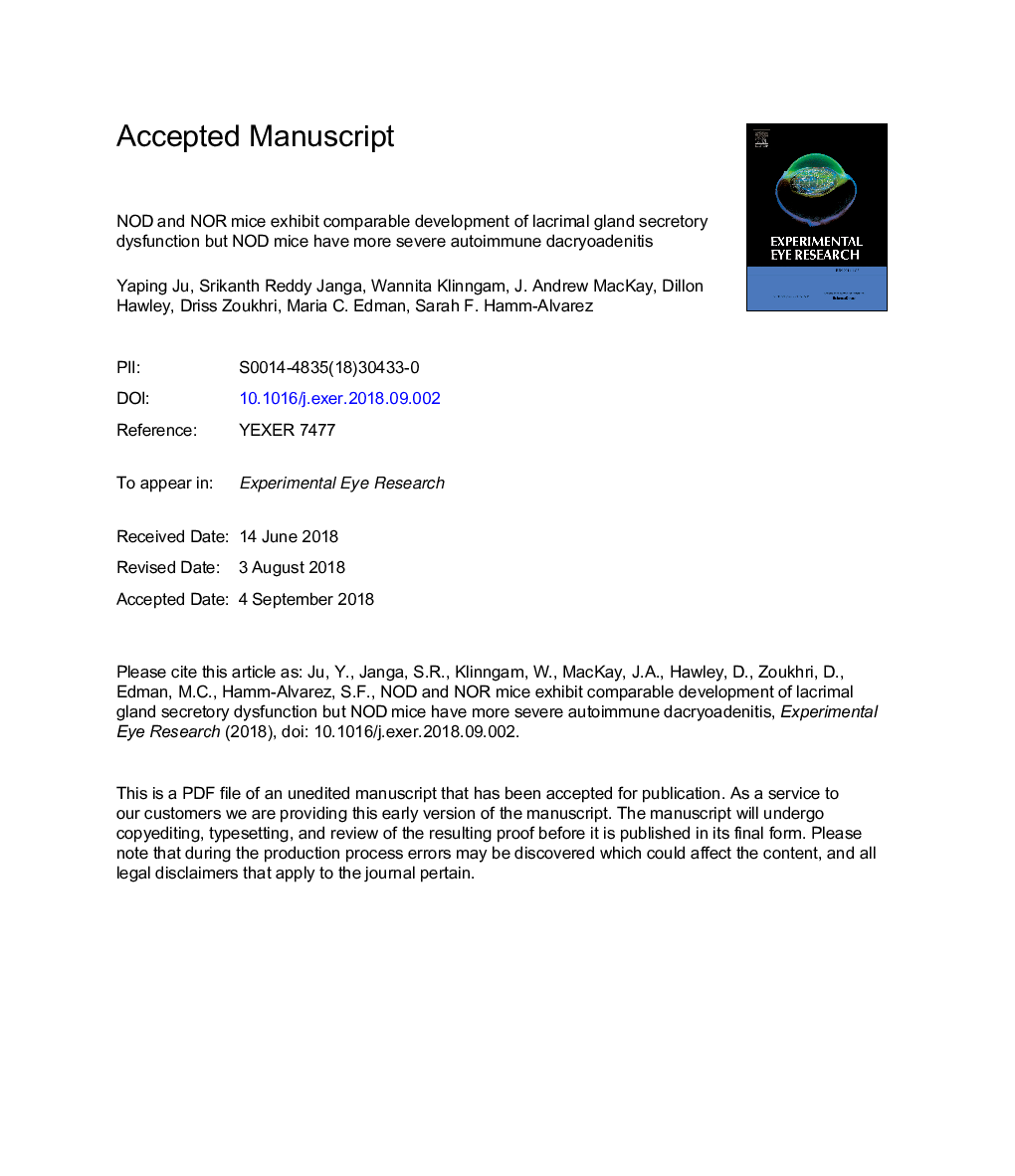| Article ID | Journal | Published Year | Pages | File Type |
|---|---|---|---|---|
| 10077609 | Experimental Eye Research | 2018 | 36 Pages |
Abstract
The male Non-Obese Diabetic (NOD) mouse is an established model of autoimmune dacryoadenitis characteristic of Sjögren's Syndrome (SS), but development of diabetes may complicate studies. The Non-Obese Diabetes Resistant (NOR) mouse is a MHC-II matched diabetes-resistant alternative, but development of autoimmune dacryoadenitis is not well-characterized. We compare features of SS in male NOD and NOR mice at 12 and 20 weeks. Stimulated tear secretion was decreased in 12 week NOD relative to BALB/c mice (pâ¯<â¯0.05), while by 20 weeks both NOD and NOR showed decreased stimulated tear secretion relative to BALB/c mice (pâ¯<â¯0.001). Tear CTSS activity was elevated in NOD and NOR relative to BALB/c mice (pâ¯<â¯0.05) at 12 and 20 weeks. While NOD and NOR lacrimal glands (LG) showed increased LG lymphocytic infiltration at 12 and 20 weeks relative to BALB/c mouse LG (pâ¯<â¯0.05), the percentage in NOD was higher relative to NOR at each age (pâ¯<â¯0.05). Gene expression of CTSS, MHC II and IFN-γ in LG were significantly increased in NOD but not NOR relative to BALB/c at 12 and 20 weeks. Redistribution of the secretory effector, Rab3D in acinar cells was observed at both time points in NOD and NOR, but thinning of myoepithelial cells at 12 weeks in NOD and NOR mice was restored by 20 weeks in NOR mice. NOD and NOR mice share features of SS-like autoimmune dacryoadenitis, suggesting common disease etiology. Other findings suggest more pronounced lymphocytic infiltration in NOD mouse LG including increased pro-inflammatory factors that may be unique to this model.
Keywords
Related Topics
Life Sciences
Immunology and Microbiology
Immunology and Microbiology (General)
Authors
Yaping Ju, Srikanth Reddy Janga, Wannita Klinngam, J. Andrew MacKay, Dillon Hawley, Driss Zoukhri, Maria C. Edman, Sarah F. Hamm-Alvarez,
